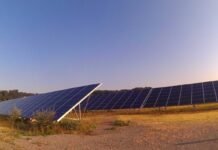The government of Angola has selected Hydro-Link, a company owned by US-based Symbion Power, to lead the development of a US $1.5bn electricity transmission line that will deliver hydropower to the mining-intensive Copperbelt region in the Democratic Republic of Congo (DRC).
The planned 1,150-kilometre transmission line will connect Angola’s Lauca hydropower plant and other facilities to Kolwezi in southern DRC. With a transmission capacity of up to 1.2GW, the project is designed to support mining companies struggling with energy shortages and reduce reliance on costly and polluting diesel generators.
Completion is targeted for 2029, and the project is expected to improve regional power connectivity, create thousands of jobs, and expand electricity access for local communities along the route. To fund approximately 70% of the project, Hydro-Link is seeking financial assistance from US government institutions, including the International Development Finance Corporation (DFC), the US Export-Import Bank, and the US Trade and Development Agency. While these agencies have not confirmed their involvement, discussions are ongoing.
Hydro-Link CEO Paul Hinks, who also co-founded Symbion Power, said the idea for the project was driven by urgent demand from mining firms in the DRC. Companies such as Glencore and Ivanhoe Mines are among those expected to benefit from the improved power supply.
The DRC’s mining operations, particularly in copper and cobalt production, are frequently affected by unreliable power infrastructure. In contrast, Angola has a surplus of clean electricity, with estimates indicating around 1.5GW of unused hydroelectric capacity, according to the African Development Bank.
READ: Uganda launches Biofuels Blending Programme
Energy security
Rishon Chimboza, a senior advisor on African investment at the Tony Blair Institute for Global Change, said the project could significantly reduce power deficits in the DRC’s Copperbelt.
“The region currently faces a shortfall of about 700 megawatts,” he noted. “Many mines depend on diesel generators or power imported from Zambia, which drives up costs and limits their ability to expand. A direct line from Angola would offer a more stable and cost-effective solution.”
However, Chimboza also warned that the initiative could face challenges such as bureaucratic delays, permitting hurdles, and land acquisition issues that often complicate large infrastructure projects in the region.
Beyond its infrastructure value, the power line aligns with growing US strategic interest in securing access to Africa’s critical minerals. In June, the DRC signed a mineral rights agreement with the United States, opening up opportunities for US firms to source key raw materials like cobalt, copper, lithium, and tantalum.
“This project is an enabler for more extensive US investments in Central Africa’s mining industry,” Chimboza explained. “Access to reliable energy is one of the main barriers to launching major mining ventures, and this transmission line helps eliminate that obstacle.”
The deal follows recent diplomatic efforts by the US to promote regional stability, including its role in brokering a peace agreement between the DRC and Rwanda to ease conflict in eastern Congo. If realized on schedule, the Angola-DRC transmission line will serve as a vital infrastructure link, supporting economic development, clean energy use, and international cooperation in one of Africa’s most resource-rich corridors.





